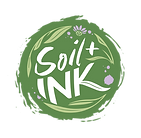Are Native Plants Just a Trend?
- Angela

- Jan 24, 2023
- 3 min read
For the past two years I have focused on talking about specific plants that I do or don't recommend for use in your landscape. In 2023 I'll be sharing more on ideas in gardening/landscaping that we all should think about more.
Garden trends and plant popularity come and go. At last years' Perennial Plant Association annual conference, I was having lunch with some colleagues. One was a particularly famous plant dude with loads of industry and plant trials experience. It's basically his job to recommend the latest and greatest new plants. I was quite shocked to hear him say that native plants are just another trend that will fade away. He also thought that consumers wouldn't even be aware of the value of native plants if it weren't for all the cultivars growers have been producing for them. I couldn't believe an industry veteran was so out of touch.

Replacing our outdated systems of landscaping and plant choice is a critical element in modern conservation and sustainability. We no longer have the luxury of planting exotic or invasive plants in our landscapes, usually as individual shrubs in a sea of mulch. And consumers know this. They are searching out native plants for their gardens in ever increasing numbers and are especially aware of the effect their decisions have on the world around them. The tide has turned and we won't be going back. Utilizing native plants is not a "trend" that will go away. It is a movement.
You all know I'm not a native plants purist. There are plenty of non-invasive exotic plants out there to love. Not sure what an exotic plant is? Roses. Boxwood. Crepe myrtle. All exotic. Of course, new exotic plants will continue be brought to market by growers. Hopefully they will be more benign than in the past as we are more aware of the effects of introducing non-natives to new environments (I'll address that in an upcoming post). However, early research says that at least 70% of our plant biomass should be locally native in order to simply sustain (not improve) current wildlife populations. Ecologically minded professionals should be aiming for this minimum.
What can you do as a gardener and consumer? Be an informed shopper. Go to your local garden center (not Lowe's, Home Depot, or Walmart), and ask where their native plants are grown. Ask them if any are straight species (non-cultivars), and if they have been treated with pesticides at the grower (if so, and probably so, they may kill pollinators for at least their first year in your landscape). Be aware that the term "native" on the plant label does not necessarily mean the plant is native to where YOU live. Let them know you want to buy locally native, non-treated native plants. You can also shop at the many local native plants sales are held every year. Finally, you can dive deeper by understanding cultivars and why some of them are not even useful to wildlife despite their origins. There's one in the photo above. Did you spot it?

This year we will be covering some more subjects such as the value of native plant cultivars, restoring ecological functions to your property, landscape lighting, etc. Perhaps we will have a few guest writers -- anybody want to jump in? I hope to make you think more about the choices we have all made in the past and whether or not they are sustainable for the future. Let me know what other gardening subjects you'd like to learn more about by dropping me a message or a comment below!




Comments